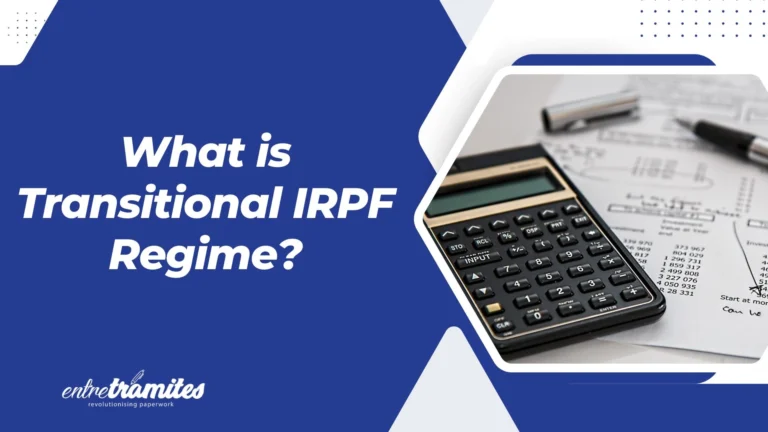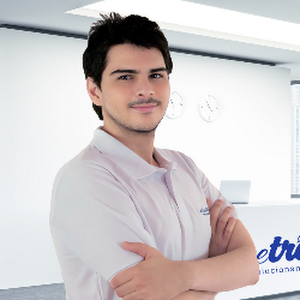What is the IVA Form 303?
It is a form that self-employed workers and companies must present to make the quarterly IVA declaration, that is, the IVA Form 303 is used to determine the IVA return. Keep in mind that IVA is a tax that is paid exclusively by the consumer because it taxes consumption, and the company or self-employed person performs the function of collecting the tax.
As defined in the regulations, IVA” taxes the deliveries of goods and provision of services made by businessmen and professionals, intra-community acquisitions and imports of goods”. It is the Spanish term for VAT (Value-Added Tax).
In other words, the moment we buy or sell something is when we pay or pay IVA. If we are a company, when we enter the corresponding amount of IVA applied to our product and the final consumer has paid, then we will have to return it to Hacienda (Treasury).
In the same way, the Tax Agency also returns IVA to companies or the self-employed when they are the ones who bear this IVA. That is when in turn we have paid it, for example to a supplier, for the provision of a service.
What we will have to settle with Hacienda is the difference between the registered IVA and the paid IVA amounts.
The IVA Form 303 has an informative annual IVA self-assessment model that is Form 390. The IVA Form 390 is a mandatory annual form that is informative in nature and must be submitted in January and summarizes the Quarterly IVA Return that has been produced throughout the year.
In the end, every self-employed person and company is obliged to declare what they invoice, even if they have not received it. As an exception, those who are covered by the special regime of cash criterion.
The date of issue of the invoice must be taken into account regardless of the expiration date of the invoice or the status of the payment.
How to fill in the IVA Form 303?
Download the Complete Guide
In this guide to fill in step-by-step the IVA Form 303 you have all the tips to fill in the multiple cells and complete it. Press the button to download it:
IVA in the General or Simplified Tax Regime
We have two types of IVA regimes: The General IVA Regime, which is applied when the activity does not fall under any special regime or when it has been waived or excluded from the simplified or special regime for agriculture, livestock and fishing.
Most self-employed workers and companies are covered by this IVA regime and the corresponding IVA percentage is passed on to customers, depending on the amount of the operation. The applicable IVA rates are 21%, 10%, or 4%.
For its part, the Simplified IVA Regime applies to individuals or entities under the income allocation regime, which carry out activities established by the Tax Agency.
Filling the IVA Form 303 in PDF
IVA Form 303 can be presented on paper. The AEAT provides Form 303 in PDF format to fill it out and create the IVA Return pre-declaration. To be able to access the IVA Form 303 on paper, you simply have to access the form here.
Who is obliged to present the model?
Most activities are subject to IVA, so any professional or businessperson who carries out an economic activity will be required to submit the IVA Form 303. Regardless of the result of the IVA Return: whether to return, enter, or compensate, even if they have no activity.
There are some singularities for:
Taxpayers who:
- Carry out activities in which the General Tax Regime applies, with the exception of the special regime for agriculture, livestock, and fishing, the equivalence surcharge regime and the simplified regime.
- Are enrolled in the Monthly Return Registry.
- They are considered Large Companies for having exceeded the figure of 6,010,121.04 euros in their trading volume of the immediately preceding calendar year.
When is the IVA Form 303 presented?
The presentation of the IVA Form 303 must be quarterly, although voluntarily it can be presented monthly if this has been previously indicated when registering as a company or self-employed worker (Form 036).
Monthly IVA Form 303
As we have said, as a general rule the IVA Form 303 is presented quarterly, but you can choose to file it monthly.
For monthly self-assessments, the submission deadlines are:
– From the 1st to the 20th of the month following the settlement period.
– The self-assessment corresponding to the month of December will be submitted from January 1 to 30. Within this period, the Form 390 annual summary statement must also be submitted.
In order to benefit from the monthly IVA settlement, taxpayers must be registered in a “monthly refund registry”, submit Form 036 electronically, and check box 129. Exceptions: taxpayers who are registered in the registry of exporters and other operators, for which the standard provides for their automatic inclusion.
Those who submit the monthly IVA must also submit form 340, which is the informative declaration of IVA registration books.
Consult all the conditions here.
Quarterly IVA Form 303 Submission Term:
- First Trimester: from April 1 to 20, both inclusive
- Second Trimester: from July 1 to 20, both inclusive
- Third Trimester: from October 1 to 20, both inclusive
- Fourth Quarter: from January 1 to 30, both inclusive
When the last day to file the tax falls on a Saturday, Sunday, or holiday, the deadline for filing Form 303 is extended until the next business day.
What information do I need to fill out the IVA Form 303?
All income and expenses related to your economic activity are needed. To justify them, the invoice for each of them is required. It must be taken into account that for IVA only invoices can be deducted, not tickets.
In order to fill in the IVA Form 303 we need to separate the information according to these criteria:
- Separate the values between the tax base and the value of the IVA quota. TAX BASE: amount to be paid or received from which we will apply the corresponding IVA. That is, if you pay your client €1,000 for a web design, for example, you will have to pay 1,000+21%. The tax base is 1000. The value of the fee:
- According to tax rate (IVA of 4%, 10%, 21%)
- Separate according to the origin of the income/expense (national purchase, intra-community – that is, within the EU – or extra-community)
- If an expense is current or an investment good (machinery, computer equipment…). An investment good is that asset that lasts more than a year while the current one is those purchases of goods or services that are consumed in less than a year (current expenses).
It should be noted that an asset can be computed as an expense if the amount is less than €600.
What expenses can I deduct?
All those directly related to your economic activity. This implies that the criteria is relatively subjective depending on the economic activity, without having defined standards.
When is IVA refunded to the self-employed?
If the result of the IVA settlement is negative, it means that during that period we have had more expenses than income, so we will not have to pay anything to the AEAT.
In this case, we would have two options: compensation or return.
How do I make the payment of the IVA Form 303 if the amount is positive?
If when presenting the IVA Form 303, as well as any Tax Form, it gives us a positive result, it means that we will have to pay said tax. So, surprise! We will have to pay for it to Hacienda! In order to anticipate this type of situation, it is essential to know the IVA to be settled at all times.
To make the payment of Form 303 we have two methods: By direct debit or, to make payment through the bank.
In the first case, you have until the 15th of each month to request this form of payment. In this way, if the result is positive, the tax will be charged directly by the bank. And the cost will be passed to you on the last day of filing the tax.
If, on the other hand, you have not selected to make the payment by direct debit, you can pay the tax directly through your bank.
Example: IVA settlement for the Self-Employed
In this practical example, we are self-employed, and we have a mobile phone from which we receive an invoice each month of 100 euros plus 21% IVA, which gives a total of 121 euros/invoice. From the first quarter, we have 3 invoices, the total amount of which amounts to 363 euros, IVA included.
We can only deduct 50 percent of the mobile phone bill because its use is not exclusively for work. Therefore, of the 21 euros of IVA on each invoice, we can only deduct 10.5 euros from each one. In total, 31.5 euros, in this case, because we do it for a quarter (3 months).
In this way, from the €363 (of the total invoice) we subtract €31.5 (IVA) = €331.5. This result is what we will have to pay/settle in the first quarter in Form 303.
Example: IVA settlement for Companies
Now we are a company, which also has a mobile phone. In this case, we can deduct 100 percent of the IVA. From the first quarter, we have 1 invoice each month of 200 plus 21% IVA. In total, €242 of IVA is included in each bill and a total of €726 for mobile phone bills in the first quarter.
As we deduct 100% of IVA, the 42 euros of IVA on each invoice add up to €126 of IVA. Thus, we will subtract from the €726 of the telephone for the quarter, the €126 of IVA = €600, which is the amount that we will have to pay/settle for the first quarter in Form 303.
Conclusion
If you still consider that it is very complicated or that doing it on your own takes away valuable time that you could dedicate to your business, and you need some type of advice in Entre Trámites we can help you! It is always good to leave tax issues in the hands of specialists.
So, contact us! Through the contact form, you can leave your details for us to call you, schedule a free consultation with us, or text our WhatsApp.
You may also be interested in:





